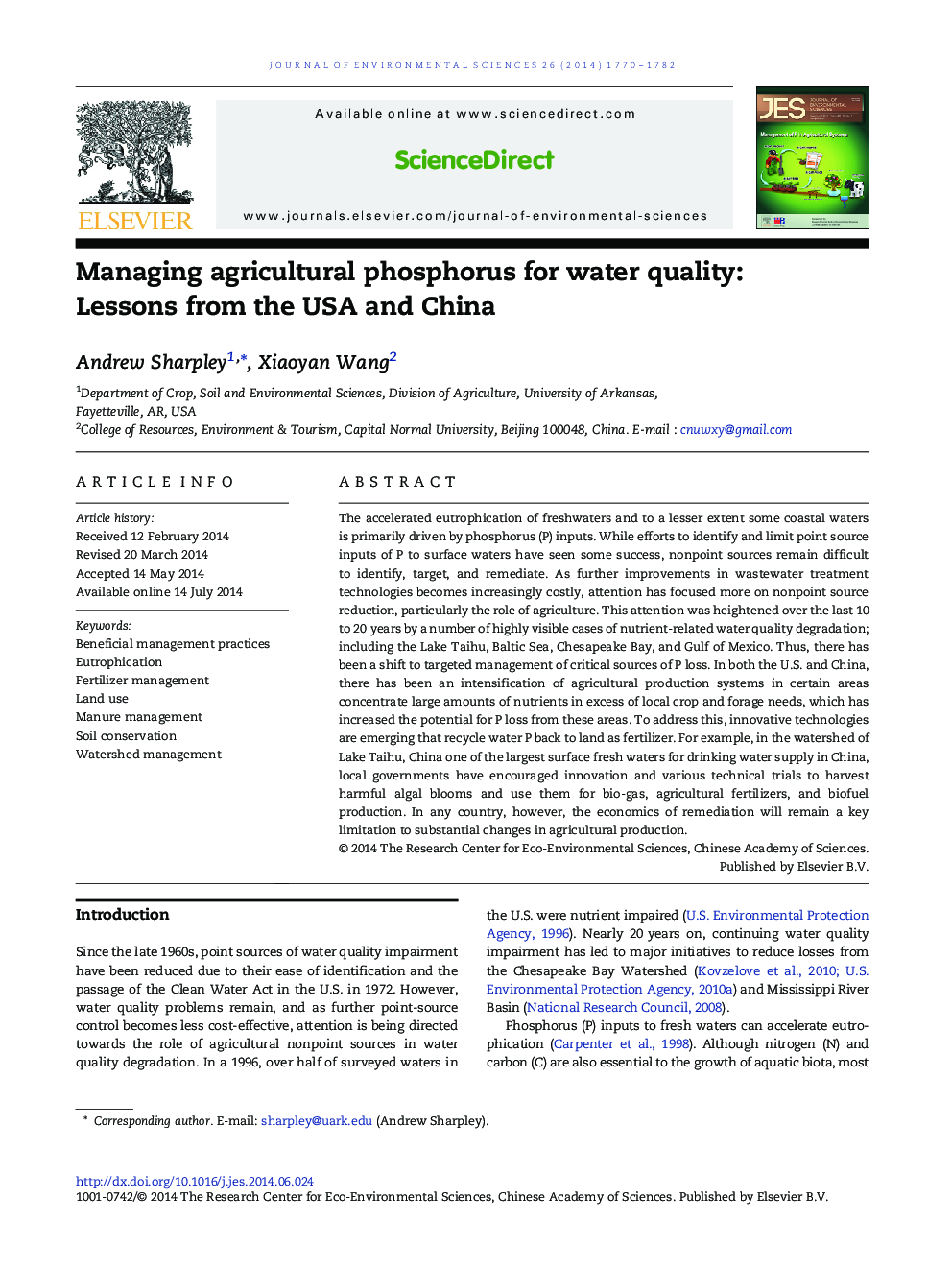| Article ID | Journal | Published Year | Pages | File Type |
|---|---|---|---|---|
| 4454510 | Journal of Environmental Sciences | 2014 | 13 Pages |
The accelerated eutrophication of freshwaters and to a lesser extent some coastal waters is primarily driven by phosphorus (P) inputs. While efforts to identify and limit point source inputs of P to surface waters have seen some success, nonpoint sources remain difficult to identify, target, and remediate. As further improvements in wastewater treatment technologies becomes increasingly costly, attention has focused more on nonpoint source reduction, particularly the role of agriculture. This attention was heightened over the last 10 to 20 years by a number of highly visible cases of nutrient-related water quality degradation; including the Lake Taihu, Baltic Sea, Chesapeake Bay, and Gulf of Mexico. Thus, there has been a shift to targeted management of critical sources of P loss. In both the U.S. and China, there has been an intensification of agricultural production systems in certain areas concentrate large amounts of nutrients in excess of local crop and forage needs, which has increased the potential for P loss from these areas. To address this, innovative technologies are emerging that recycle water P back to land as fertilizer. For example, in the watershed of Lake Taihu, China one of the largest surface fresh waters for drinking water supply in China, local governments have encouraged innovation and various technical trials to harvest harmful algal blooms and use them for bio-gas, agricultural fertilizers, and biofuel production. In any country, however, the economics of remediation will remain a key limitation to substantial changes in agricultural production.
